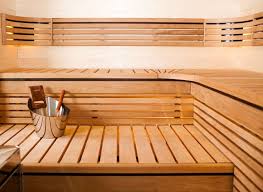Saunas have been used for centuries to provide relaxation, detoxification, and stress relief. A traditional sauna is typically heated with wood, but over the years, different materials have been used to create a comfortable and effective sauna experience. Each material has its own benefits, and it is essential to understand how they contribute to the overall sauna experience. In this article, we will take a closer look at the various materials used in traditional sauna and their benefits.
Wood
Wood is the most traditional material used in saunas and is known for its natural beauty and durability. Cedar is a popular choice for sauna construction because of its natural decay resistance and ability to withstand high temperatures. The scent of cedar also adds a pleasant aroma to the sauna experience, making it an excellent relaxation tool. Alder wood is another popular choice for a traditional sauna. It is soft, lightweight, and has a pleasant odor. The use of wood in a sauna also creates a warm, inviting ambiance, perfect for those looking to cultivate a spa-like atmosphere.
Stones
Steaming rocks on a wood stove has been a traditional method of heating saunas for centuries. A sauna stove is usually situated at the heart of the sauna and is typically made of cast iron or steel. Large stones are placed on top of the stove, which is then heated to produce steam by adding water onto the stones. The highly porous stones are ideal for absorbing and holding water, which rapidly turns into steam when heated, releasing heat uniformly throughout the sauna. This method of heating provides an excellent source of relaxation, detoxification, and purification, and is an essential feature of a traditional sauna.
Glass
If you prefer a modern twist to your sauna experience, then a glass sauna could be just what you need. Glass-walled saunas provide a unique panoramic view as you sit and relax. The glass walls also allow you to look out into nature, adding an extra dimension of relaxation to your sauna experience. You can enjoy the breathtaking views outside while taking comfort in the heat inside.
Copper
Copper is a metal that has been used in decorating and furnishing for centuries. It is a stylish and unique material that can be used in constructing a traditional sauna. A copper sauna exudes luxury and adventure. It adds an elegant ambiance to the sauna experience and creates a warm and inviting atmosphere. Copper is also naturally antimicrobial, which means you can enjoy a clean and hygienic sauna environment.
Conclusion:
Traditional sauna materials offer a wide range of benefits, from relaxation and stress relief to detoxification and purification. Each material has its own unique characteristics that contribute to the overall sauna experience. The use of wood creates a warm and inviting ambiance, while the scent of cedar adds a pleasant aroma to the sauna. Stones provide an essential source of relaxation, detoxification, and purification, making them an essential feature of any traditional sauna. For those who prefer a modern twist, glass-walled saunas provide a panoramic view and an extra dimension of relaxation. Copper is a stylish and unique material that adds an elegant ambiance to any traditional sauna. Whatever your preference, traditional sauna materials can provide a unique and personalized experience that is sure to leave you feeling refreshed and rejuvenated.




